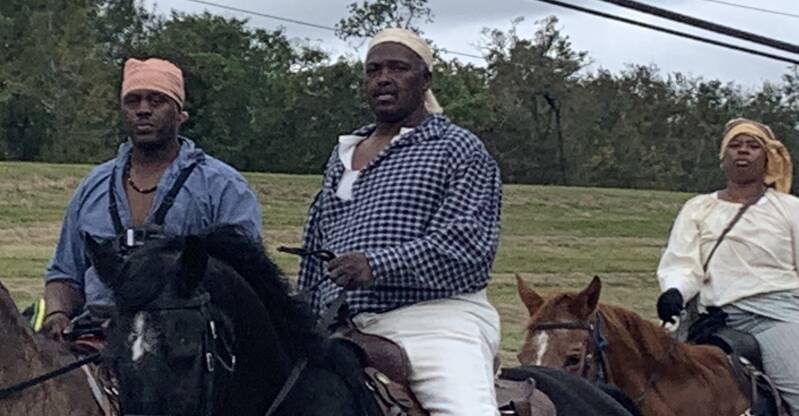Slave Revolt Re-enactment

In 1811, this was the plantation house of Col. Manuel Andry in LaPlace, Louisiana. It is where the United States’ largest slave insurrection began. This revolt, also called the German Coast Uprising of 1811, began on January 8th with a bloody skirmish at the house of Manuel Andry. The enslaved people of the Andry plantation left with shovels, axes, can knives and some guns. Over 200 enslaved people led by Charles Deslondes began a two-day march down the east bank of the Mississippi River. Their goal was to seize Orleans Territory, fight for their freedom, and end slavery. As they marched toward New Orleans, they destroyed plantations and their army grew as enslaved people left plantations to join the fight as they marched to New Orleans.
A militia was sent to quash the revolt. Some slaves were killed in the fight with militia and a number of others executed for their part in the rebellion. As a warning to other slaves, the heads of the executed slaves were displayed along the Mississippi River as a warning to other slaves.
- The Andry plantation is right down the street from my school. In November of 2019, a group people organized by Dread Scott participated in a reenactment of the slave revolt. This reenactment passed right in front of the school where I teach. Children in grades 4-8 were allowed to go outside to watch. What a powerful event this was! I was pleasantly surprised that our students really paid attention to what was going on and had great questions and commentary after it passed our area. I took the photos below during the event as it passed by my school.
- The Andry plantation is now home to the 1811 Kid Ory House which is a museum dedicated to the slave rebellion and the life of jazz musician Edward “Kid” Ory.
- See links below for more information on the German Coast Uprising of 1811, the artist Dread Scott’s Slave Rebellion Reenactment (SSR), and 1811 Kid Ory House.






Add comment
Comments